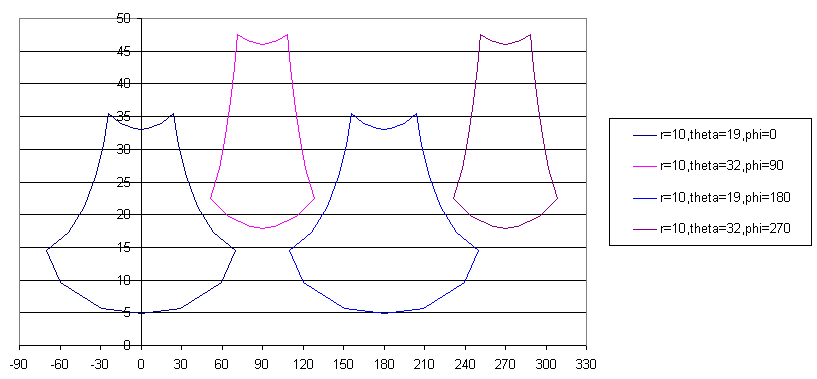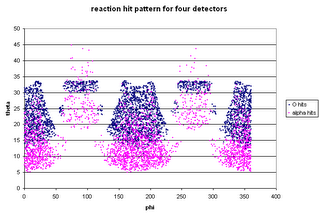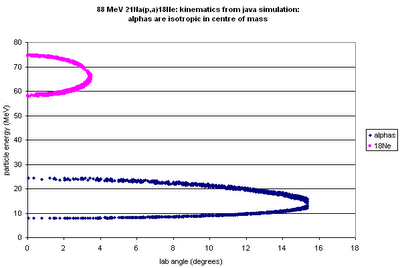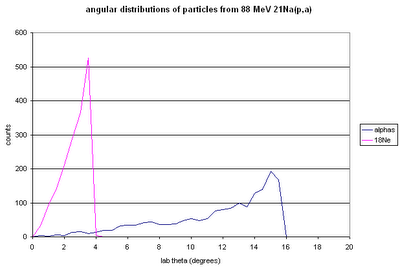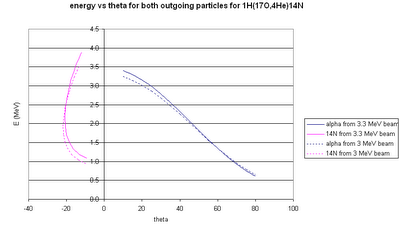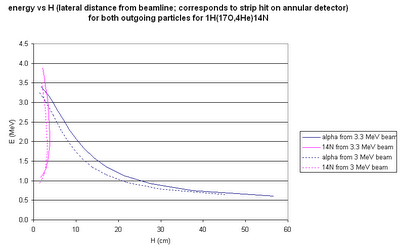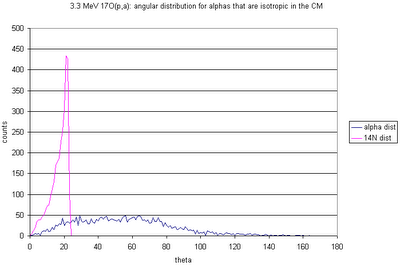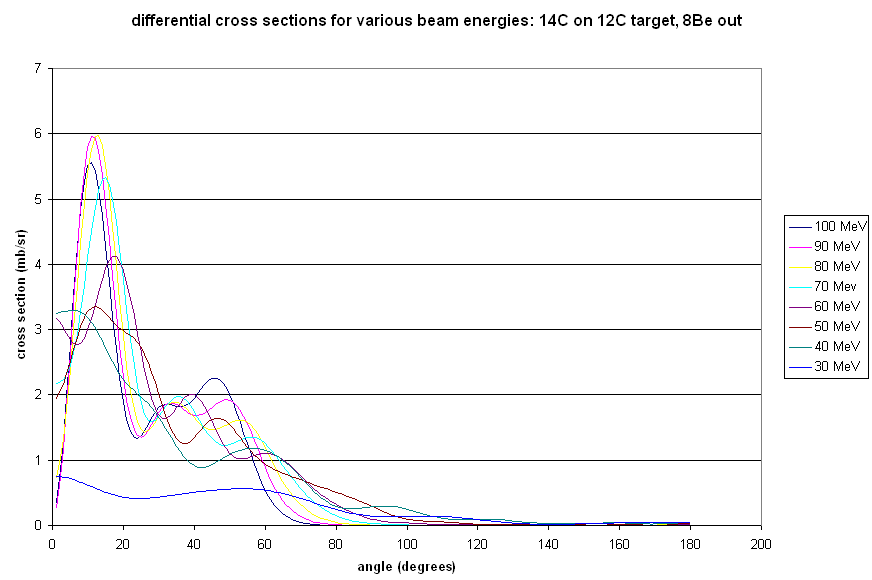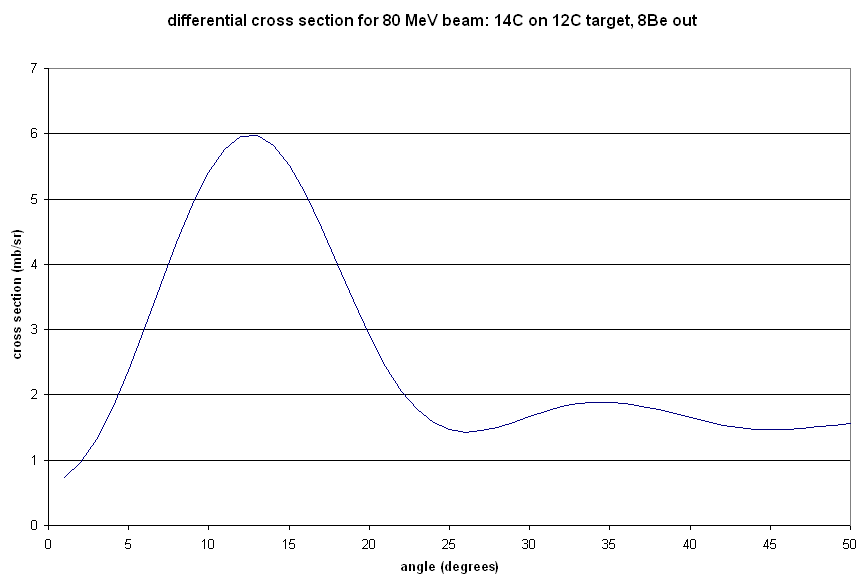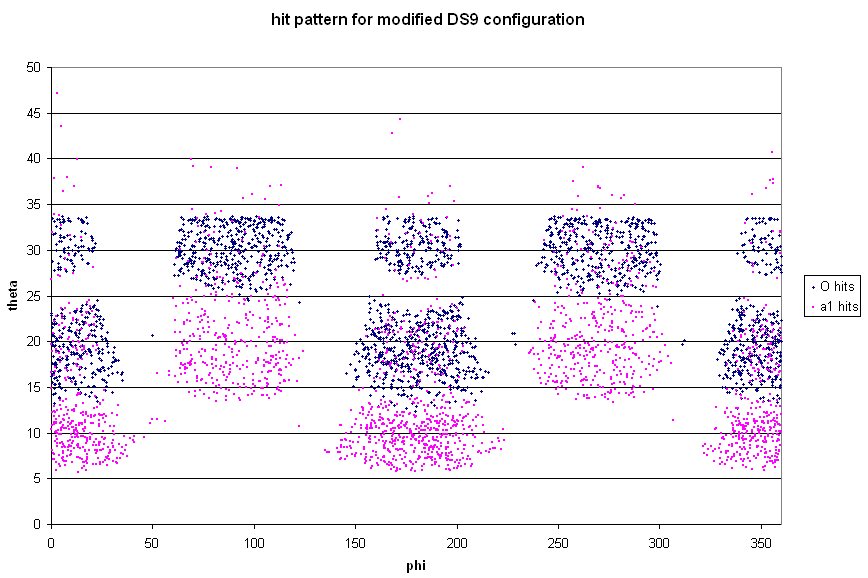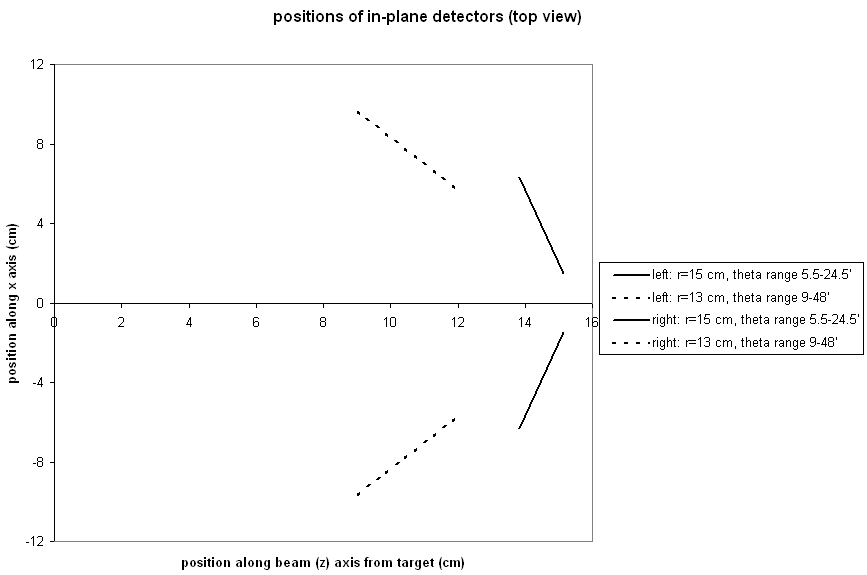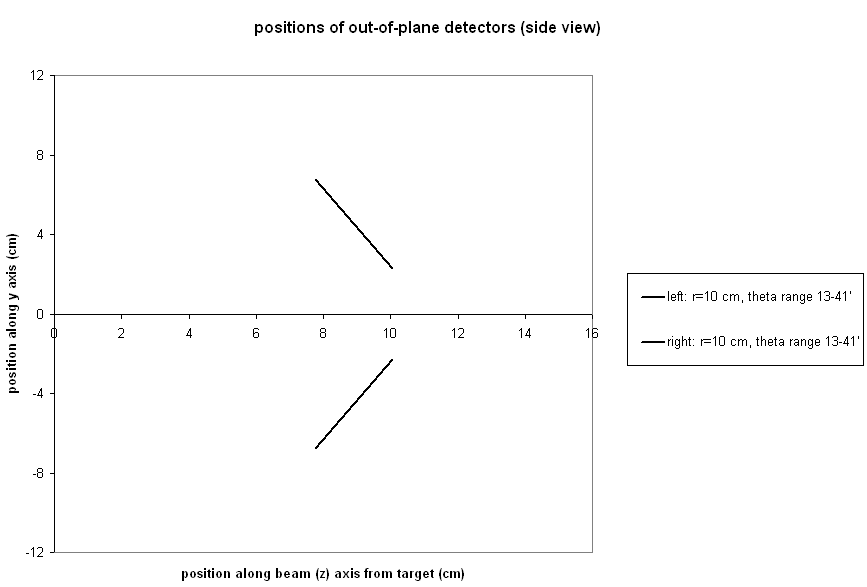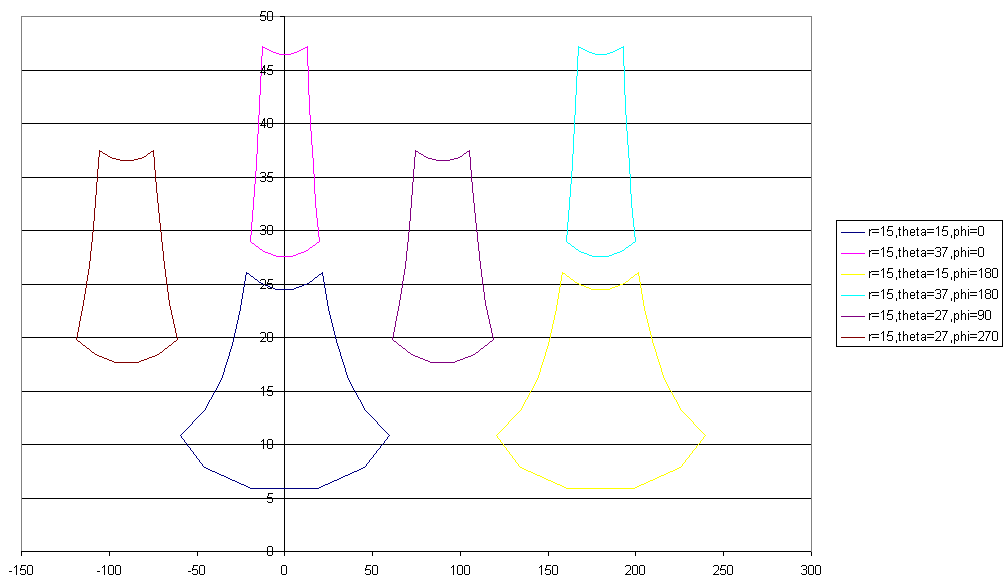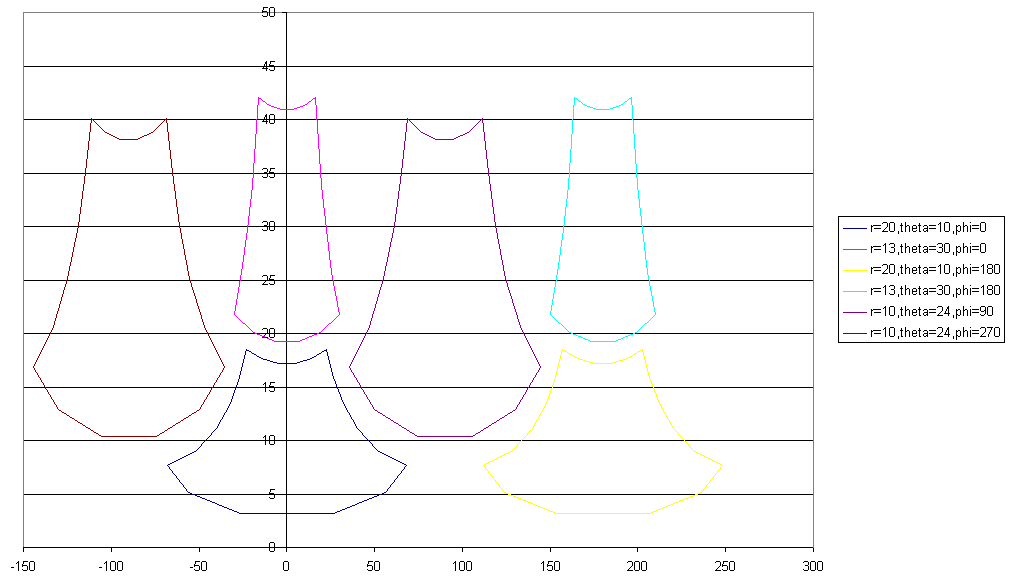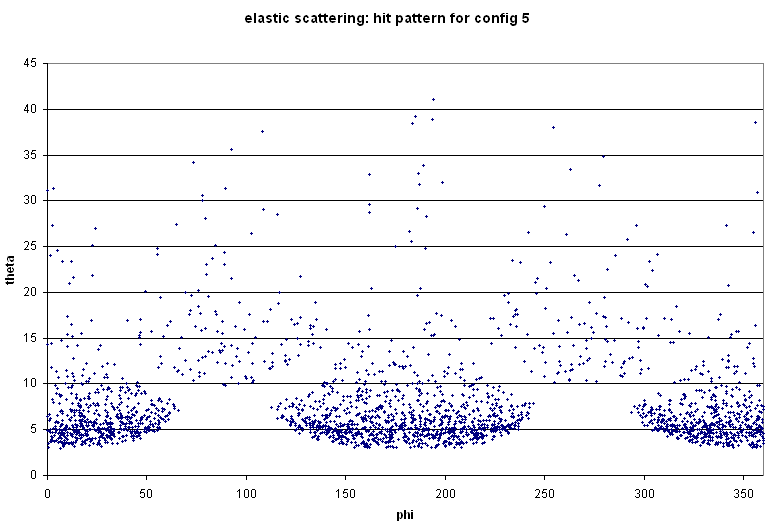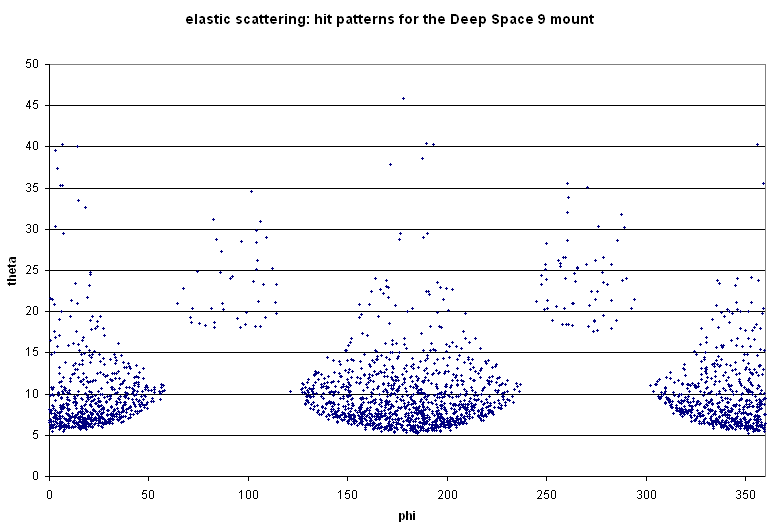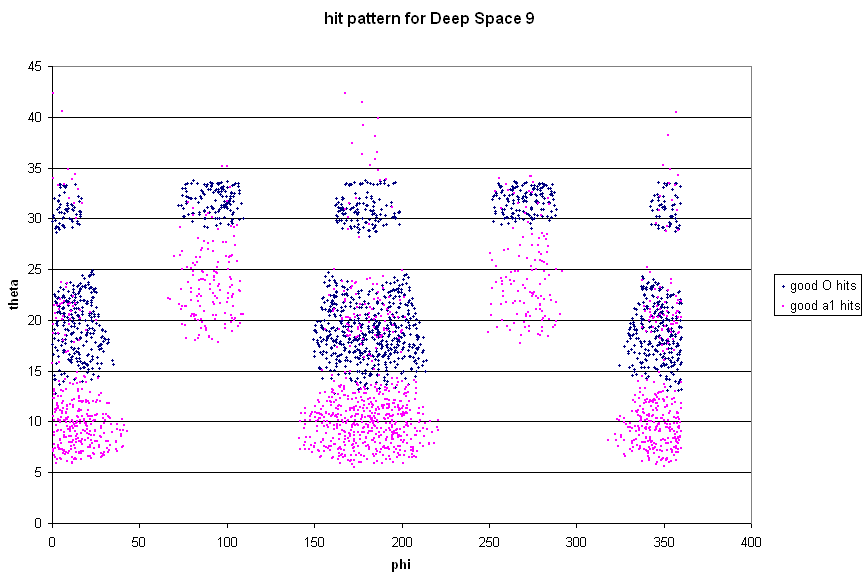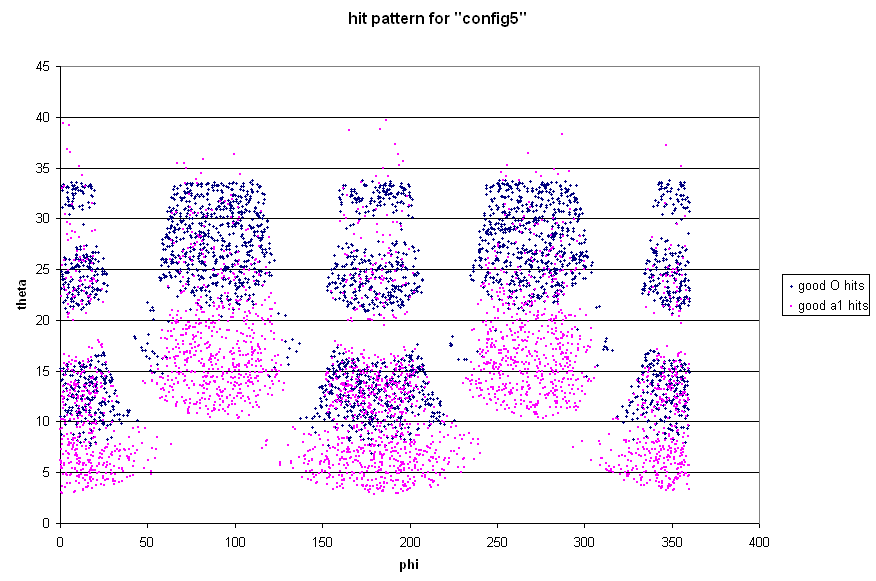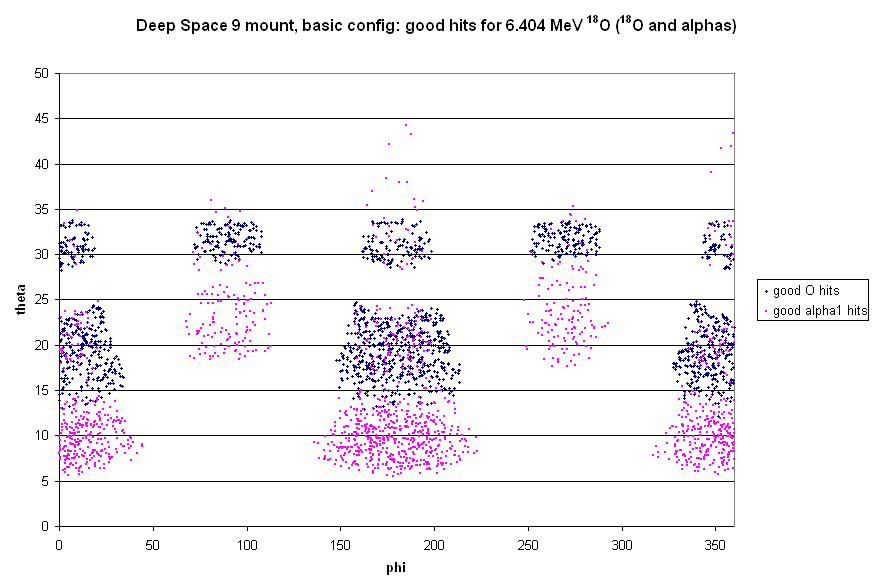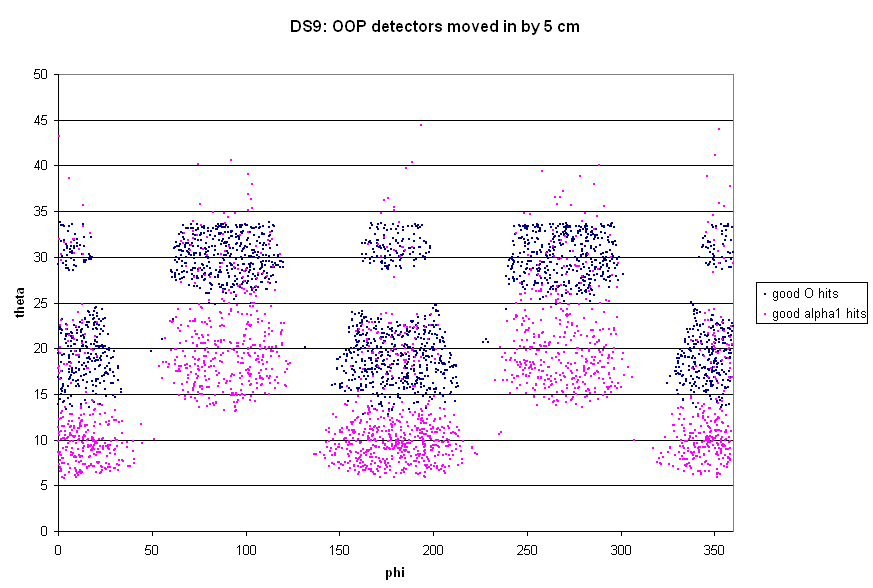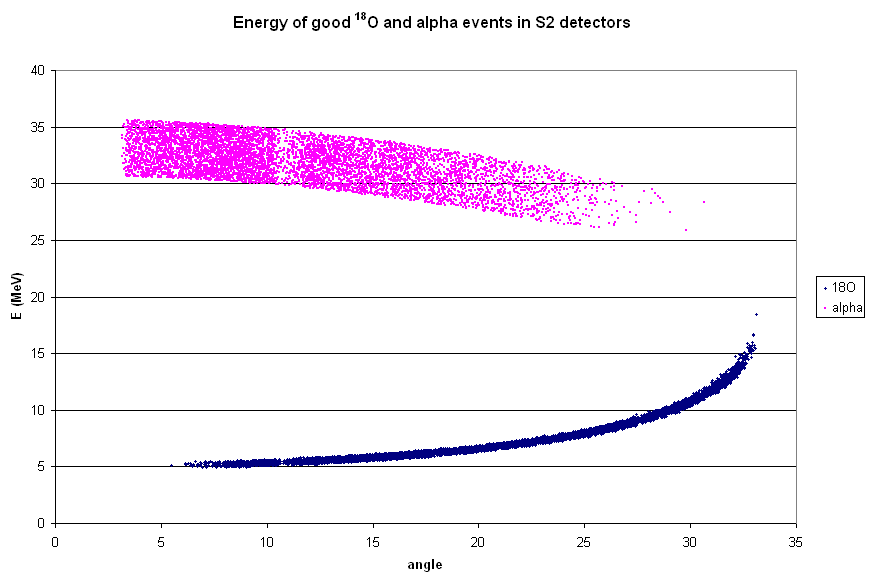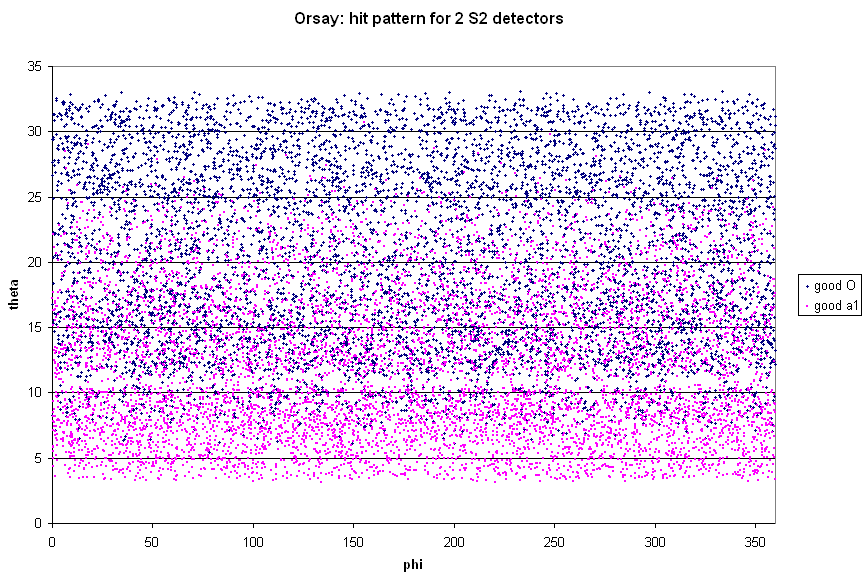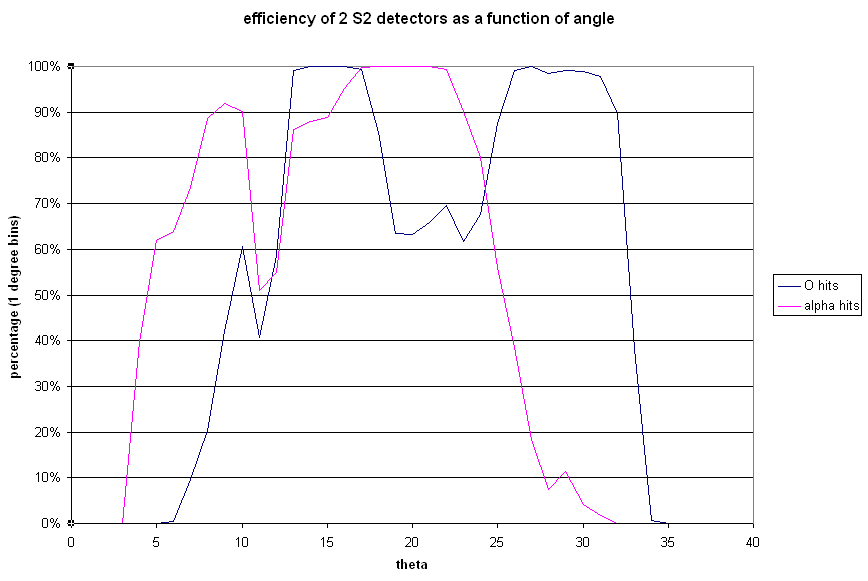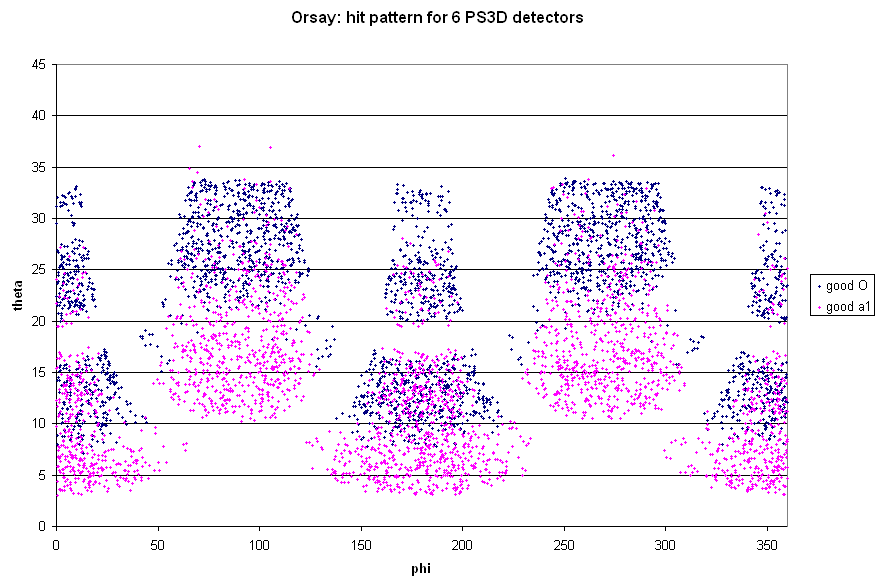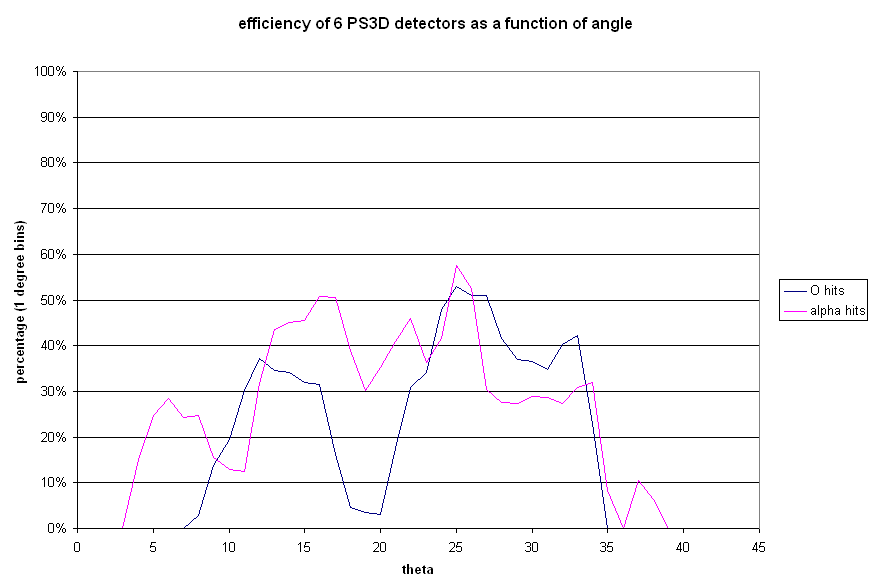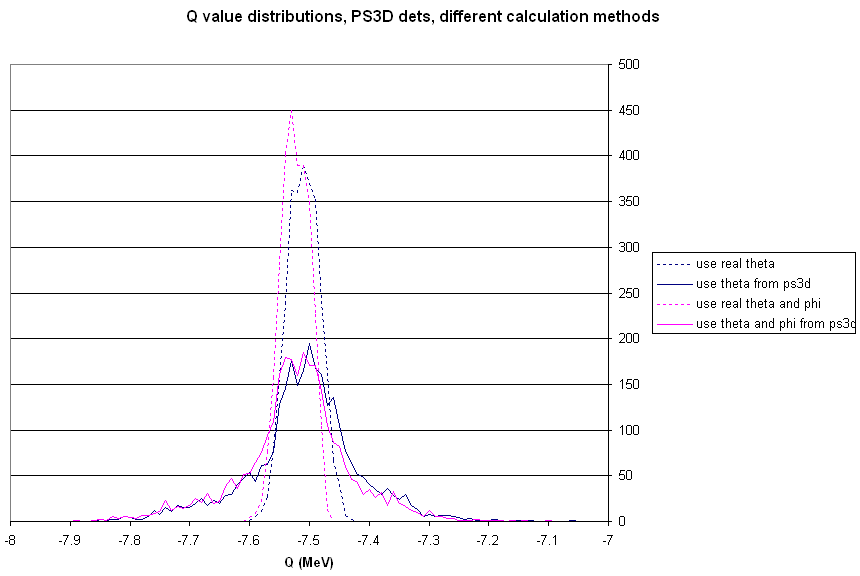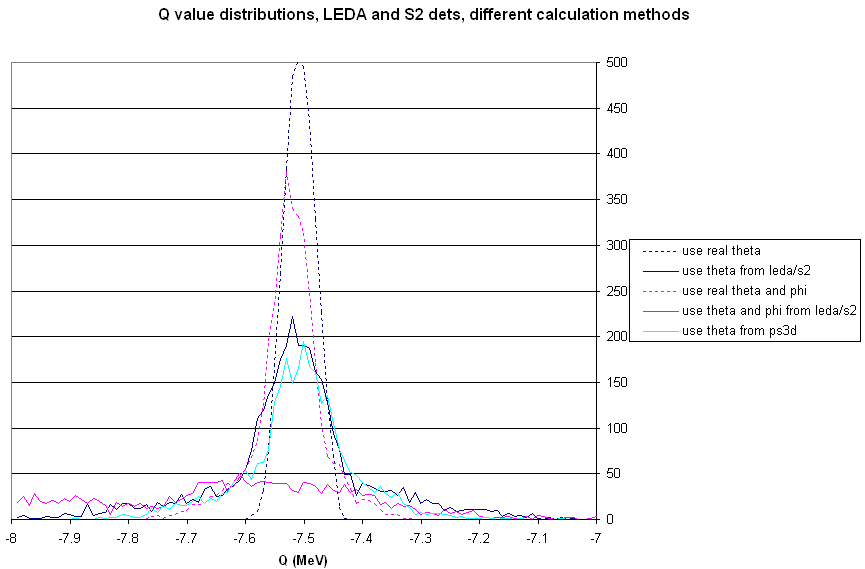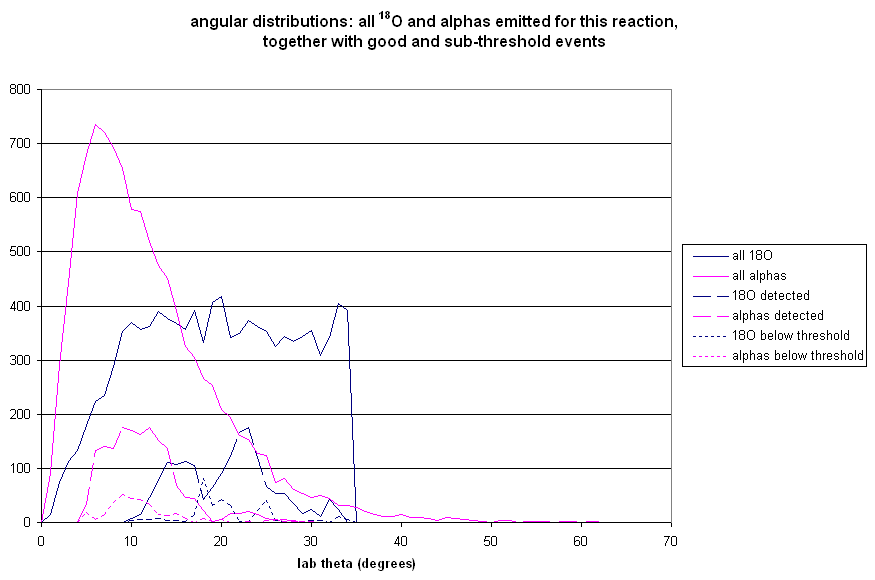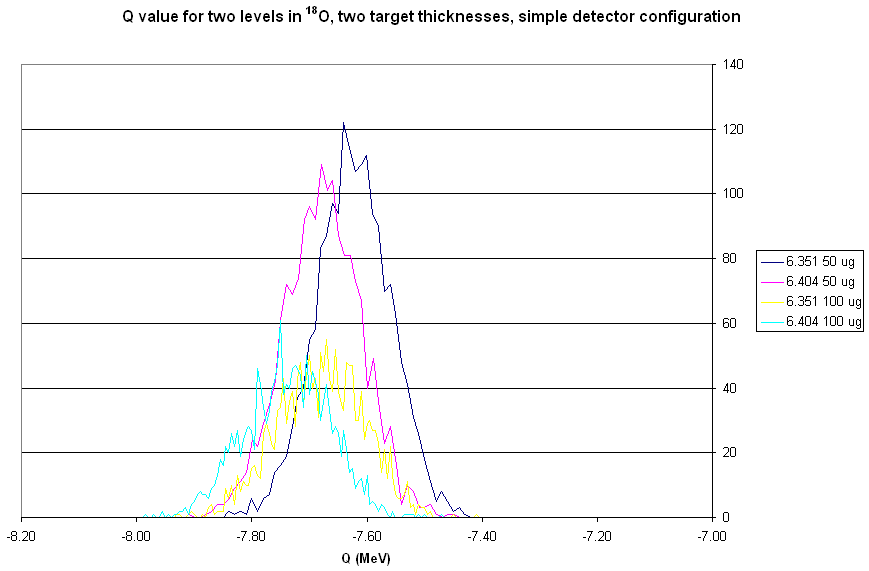So here's what I'm doing about cross sections in the elastic scattering simulation:
- Choose a random direction for the outgoing particle (8Be).
- Calculate the c.m. theta corresponding to that direction.
- Calculate the Rutherford cross section for that angle, normalized to 1 at 5':
double RCS=Math.pow( Math.sin(theta/2) , -4);
double cross_section=RCS/276237;
- Choose a random number between 0 and 1 ("test").
- If "cross_section" is greater than "test" then proceed (with energy loss calculations and direction tests and other assorted nonsense); otherwise discard this event and start again.
Using this approach I get however-many hits per strip, from elastic scattering, for every however-other-many simulated events.
(In a separate calculation, I determined the solid angle for each strip in whatever configuration.)
My question: How do I go from that ratio (and solid angle) to a reasonable estimate of time to damage the detectors?
Other information I have: from Tom's notes:
2.51E+18 atoms/cm2 in target (for 50 ug/cm2 12C target)
1.25E10 particles per second for 2 particle nanoamps
72495.9 mb/sr for elastic scattering at 5'
Someone please tell me how not to be a numpty, and how to combine all this information in a useful way.
Update: I think I might have come up with something.
- Use the Rutherford cross section to calculate the number of events, per second of beam time, into annuli of width 1', centred on 1',2',...55'.
- Simulate elastic scattering and count how many events go into the same annuli, for a given number of particles on target.
- Compare the resulting hits-per-degree curves, and find a normalization coefficient that takes us from "simulated hits per X simulated events" to "hits per second".
- Apply the normalization coefficient to the "hits per strip" calculated above.
- Deduce the lifetime of each individual strip (i.e. the number of seconds/hours/days for it to get 1e9 hits, with the given beam current).
...I'm too sleepy to go into the gory details right now--maybe tomorrow--but it looks like "configuration 5", my current favourite, will result in the middle half-dozen strips of the detectors that are at lowest angles dying within 5 days. This is good: it gives me another constraint to work with when picking detector positions.
(I figured this out this evening instead of (a) marking the papers I need to hand back first thing tomorrow, (b) working on my Manchester talk, or (c) going to bed early, so maybe I'm still a numpty.)
